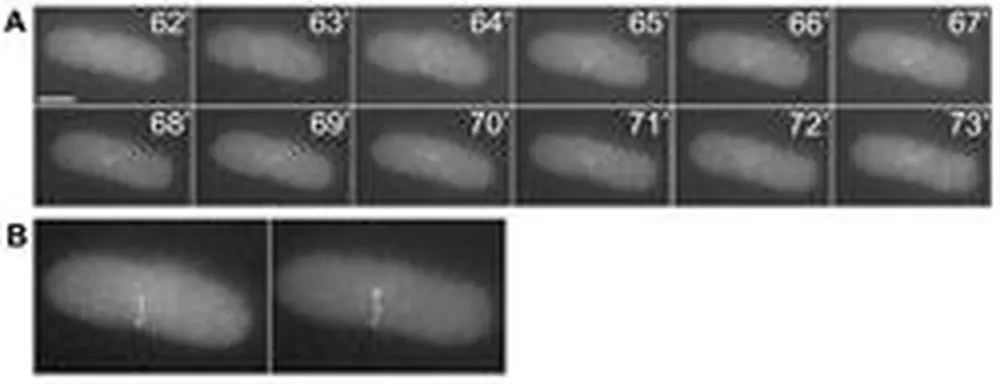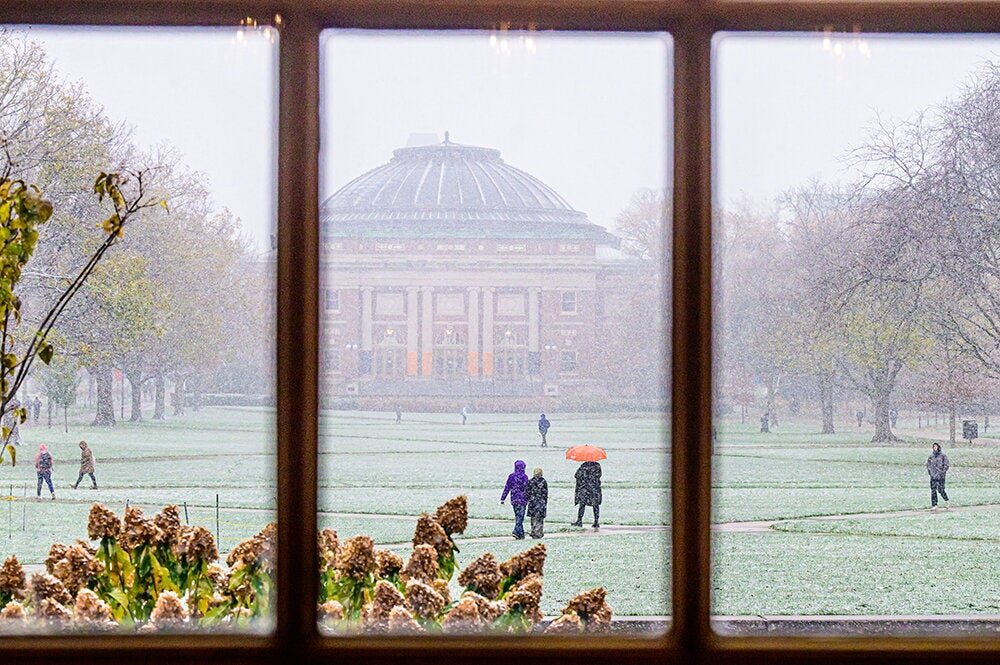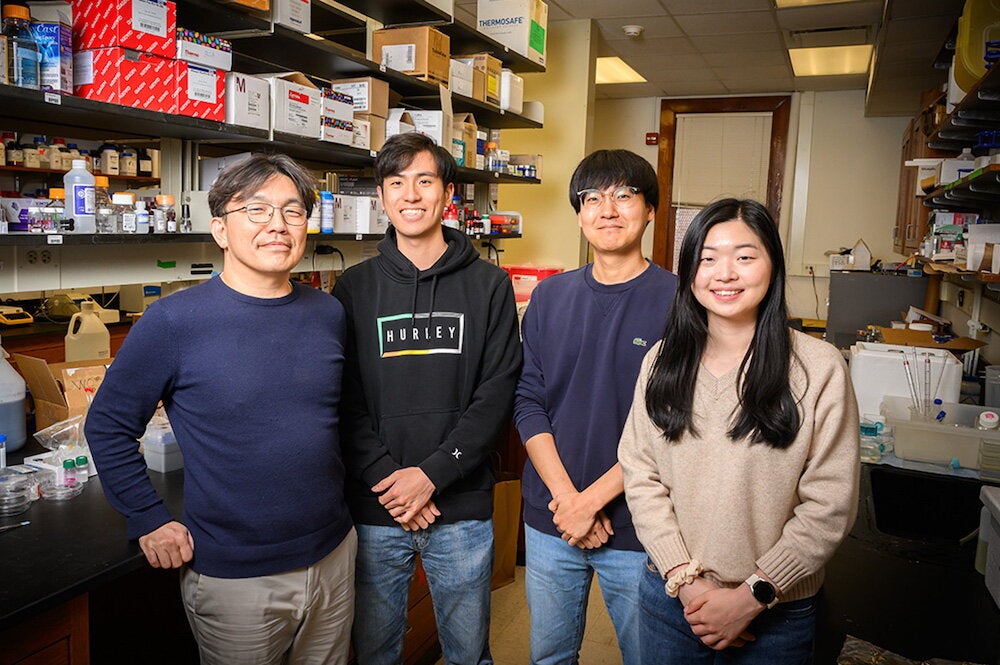

The mystery of how chromosomes move within the nucleus of a cell is a step closer to being solved, report cell biologists in LAS.
Over the last 10 years, labs across the country have found that chromosomes, which carry genes, tend to be found near certain structures within the nucleus before the genes can be activated. As a result, considerable attention has been given to where things are located within a cell's nucleus, says Andrew Belmont, a cell and developmental biologist in LAS.
"But no one has addressed very well the question that if genes have to go to certain locations in the nucleus to activate, then how on earth do they get there?" he adds.
Belmont's lab has been filling that gap, working with Primal de Lanerolle, a professor of physiology and biophysics at the University of Illinois at Chicago. Chien-Hui Chuang, a graduate student in Belmont's lab, has developed what might be characterized as a microscopic surveillance system that takes images of chromosome movement within the nucleus.
Using this system, Belmont and Chuang have come up with strong evidence that chromosomes can move in a direct line toward the interior of the nucleus, traveling several microns at a stretch. This contrasts with earlier observations of chromosome movement, in which the chromosome seemed to bounce around randomly, changing direction.
The researchers "implicated" actin and myosin molecules in this more direct, straight-line movement of chromosomes, Belmont says. One possible explanation is that actin forms a rod-like filament in the nucleus. This filament serves as a microscopic track on which a chromosome moves, just as it does in the cell's cytoplasm-the material surrounding the nucleus. Myosin, meanwhile, may act as a "molecular motor," pushing the chromosome along the actin filament.
This is the conventional way that myosin acts in the cell's cytoplasm. But the formation of filaments, let alone myosin movement along such filaments, had not been thought to occur within the nucleus. Belmont's work now raises the possibility.
He is quick to point out, however, that they still need to find the "smoking gun" that confirms this explanation. But they do know conclusively that actin and myosin are involved in some way.
In the next stage, Belmont says they would like to try a new electron microscope technique that may enable them to see the actin filaments that the chromosomes move along.
"We've basically shown that the chromosome movement depends on actin and myosin," Belmont says. "What we haven't yet proven is that they're working in a conventional sense-acting as a motor. That would be quite new, and that's what people are excited about. But we're still working on it."


